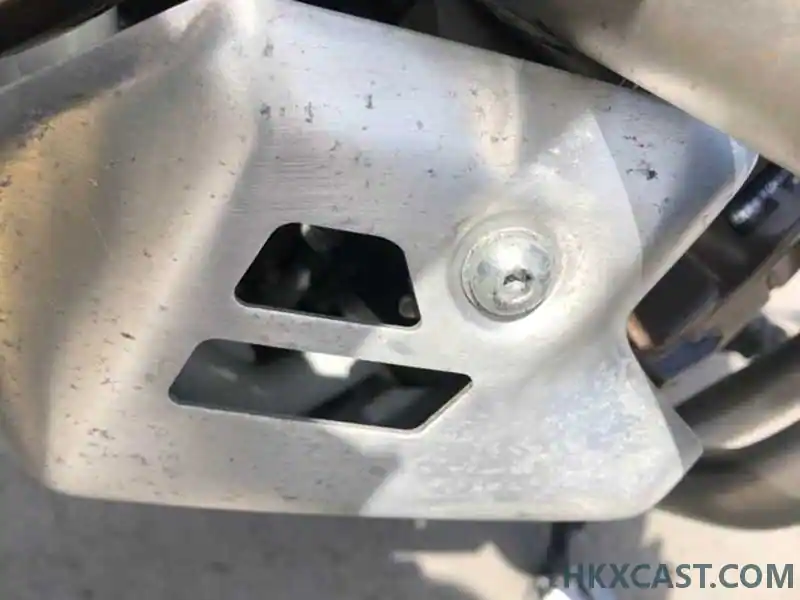As a die-casting engineer, I often get asked: “Will aluminum parts rust like old iron tools?” Simply put, no—aluminum doesn’t “rust” in the same way as iron. But that doesn’t mean it can’t corrode. In fact, aluminum corrodes even more easily than iron! However, when aluminum corrodes, it still looks clean and shiny, unlike iron, which becomes covered in ugly red flakes.
Let’s take a closer look at the science behind aluminum corrosion and why it’s a top choice for durable industrial parts.
Does aluminum rust?
Aluminum (symbol: Al, atomic number: 13) is a lightweight, silver-white metal. On the periodic table, aluminum is a very reactive metal, so in theory, it should corrode easily. So why do people often say aluminum doesn’t rust?
Here’s why: When exposed to air, aluminum quickly reacts with oxygen to form a thin layer of aluminum oxide (Al₂O₃)—only about 2-10 nanometers thick. This layer:
- Sticks tightly to the surface, blocking oxygen and moisture from reaching the metal inside.
- If scratched, the exposed aluminum instantly re-oxidizes, repairing the protective layer.
Because of this, aluminum usually does not corrode under normal conditions.

When Can Aluminum Corrode?
Even though aluminum resists rust well, it can still corrode in these situations:
- Strong Acids or Bases
- Acids (e.g., hydrochloric acid) dissolve the oxide layer.
- Bases (e.g., NaOH) react with aluminum, making it corrode.
- Saltwater or Chloride Environments
- Seawater, road salt, or pool water can cause pitting (small holes in the metal).
- Contact with Other Metals
- If aluminum touches copper, steel, or nickel in water, it corrodes faster (galvanic corrosion).
- High Heat and Humidity
- Hot, wet air (especially with pollution) damages the oxide layer.
- Tight Gaps or Crevices
- Moisture trapped between aluminum and another material can cause hidden corrosion.
- Stress + Corrosion
- Some aluminum alloys crack under pressure + saltwater or chemicals.
Proven Ways to Protect Aluminum Components
How to Protect Aluminum?Usually, aluminum parts undergo Surface treatments.
Here are the common surface treatment processes used to protect aluminum alloys, along with their key characteristics and applications:
1. Anodizing
- Purpose: Forms a dense aluminum oxide (Al₂O₃) layer for corrosion resistance, hardness, and insulation.
- Protection Features:
- Sealing (e.g., hot water or cold sealing) enhances corrosion resistance.
- Can be dyed (e.g., black, gold) for aesthetics.
- Applications: Electronics enclosures, aerospace components, architectural profiles.
2. Chemical Conversion Coating
- Chromating:
- Forms a chromate film for corrosion resistance and paint adhesion.
- Eco-friendly alternatives: Titanium/Zirconium-based or phosphate coatings.
- Phosphating: Rare for Al but improves paint bonding.
3. Electroplating
- Common Coatings: Nickel, chromium, or zinc plating.
- Protection Features:
- Enhances wear resistance, conductivity, or appearance (e.g., chrome plating).
- Requires pre-treatment (e.g., zinc immersion) for adhesion.
- Applications: Electrical connectors, automotive parts.
4. Spray Coating
- Powder Coating:
- Electrostatic epoxy/polyester powder cured under heat for weather-resistant finishes.
- Advantages: Solvent-free, UV-resistant, color variety.
- Liquid Painting: Requires a chemical or anodized base layer.
5. Passivation
- Process: Chemical treatment (e.g., nitric acid) to remove free aluminum ions, forming a passive oxide layer.
- Applications: Precision parts (e.g., medical devices).
6. PVD/CVD (Physical/Chemical Vapor Deposition)
- Coatings: TiN (Titanium Nitride), DLC (Diamond-Like Carbon).
- Protection Features: Extreme hardness, wear/heat resistance, metallic luster.
- Applications: Luxury watches, cutting tools, automotive trim.
7. Sealing (Post-Anodizing)
- Methods:
- Hot Water Sealing: Boiling water closes porous anodic layers.
- Cold Sealing: Nickel/fluoride-based solutions at room temperature.
- Benefits: Maximizes corrosion resistance of anodized films.
8. Laser Cladding
- Process: Laser-fuses alloy coatings (e.g., stainless steel, nickel-based) onto the surface.
- Applications: Repairing worn parts or adding localized wear resistance.
Selection Guide
- Corrosion Resistance: Anodizing + Sealing > Chemical Conversion > Electroplating.
- Wear Resistance: Hard Anodizing > PVD > Electroplating.
- Aesthetics: Powder Coating/PVD/Anodizing + Dyeing.
- Eco-Friendly: Chromate-free conversion coatings or powder coating.
These processes can be used alone or combined (e.g., anodizing + painting) based on performance needs and cost considerations.
Conclusion: Engineering Confidence with Aluminum
Aluminum’s self-protecting oxide layer makes it the MVP of corrosion-resistant metals. By understanding its limits and applying smart protections, you can design components that outlast competitors’ products.
Need a corrosion-resistant die-casting solution?
[Contact our engineering team]
We will provide you with the most suitable solution.
FAQs: Addressing Your Top Concerns
Q: Can aluminum rust in saltwater?
A: No, but galvanic corrosion is a risk. Use alloy 5083/6061 with sacrificial zinc anodes.
Q: How to remove white corrosion from aluminum?
A: 1) Scrub with vinegar-water mix (1:1)
2) Rinse thoroughly
3) Apply chromate conversion coating
Q: Does painted aluminum rust?
A: Paint prevents corrosion but chips expose the metal. Combine with anodizing for maximum protection.


